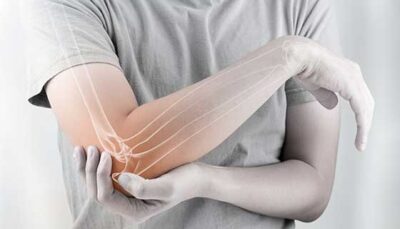Post fracture stiffness Treatment in Jaipur
Fractures are a common occurrence and can happen to anyone at any age. While most fractures heal completely and without complications, some patients may experience post-fracture stiffness. Post-fracture stiffness refers to the reduced range of motion or inability to move the affected limb freely after the fracture has healed. It is a common problem that can severely impact a patient’s quality of life.
Dr. Arvind Jaga is a renowned physiotherapyist surgeon in Jaipur with extensive experience in treating post-fracture stiffness. He offers advanced treatment options that help patients recover from their condition quickly and effectively.
The symptoms of post-fracture stiffness vary from patient to patient and depend on the location and severity of the injury. Some common symptoms include pain, swelling, stiffness, and difficulty moving the affected limb. Dr. Jaga performs a thorough evaluation of each patient to determine the underlying cause of their symptoms and to create a personalized treatment plan that addresses their specific needs.
Non-surgical treatments such as physical therapy, stretching exercises, and massage therapy are often effective in treating post-fracture stiffness. Dr. Jaga works closely with his team of physiotherapists to provide patients with customized rehabilitation programs that help them regain their strength, flexibility, and range of motion.
In some cases, surgery may be necessary to treat post-fracture stiffness. Dr. Jaga uses the latest techniques and equipment to perform surgeries such as arthroscopic surgery, joint replacement surgery, or osteotomy. These procedures aim to restore joint function and reduce pain and stiffness by removing damaged tissue, realigning bones, or replacing damaged joints.
At Dr. Jaga’s clinic, patients can expect compassionate and personalized care throughout their treatment journey. Dr. Jaga and his team are committed to providing patients with the highest quality of care, ensuring that they achieve the best possible outcomes.
If you’re experiencing post-fracture stiffness, don’t let it impact your quality of life. Contact Dr. Arvind Jaga’s clinic today to schedule a consultation and start your journey towards recovery.
towards a pain-free life.
What is post-fracture stiffness?
Causes of Post-facture Stiffness
Post-fracture stiffness can occur due to various factors. Some of the common causes of post-fracture stiffness include:
Scar tissue formation: After a fracture, the body may produce excess scar tissue around the affected area, which can limit the range of motion.
Immobilization: If the affected limb is immobilized for an extended period, the muscles and joints can become stiff, making movement difficult.
Muscle weakness: Prolonged immobilization or lack of use can cause muscle weakness, leading to limited movement.
Joint stiffness: Fractures involving joints can cause joint stiffness, leading to limited movement.
Nerve damage: In some cases, fractures can cause nerve damage, leading to reduced sensation and limited movement.
Improper healing: If a fracture does not heal properly, it can cause misalignment of bones, leading to reduced range of motion.
Infection: In rare cases, infections can occur after a fracture, leading to joint stiffness and reduced range of motion.
It is essential to seek medical attention if you experience any symptoms of post-fracture stiffness, as early diagnosis and treatment can prevent further complications.
Symptoms of Post-facture Stiffness
Reduced range of motion: Patients may experience difficulty moving the affected limb through its full range of motion, which can severely impact daily activities.
Pain: Pain around the affected area is a common symptom of post-fracture stiffness, especially during movement or physical activity.
Stiffness: Patients may experience stiffness in the affected limb, making it challenging to move or bend.
Swelling: Swelling may occur around the affected area, making it difficult to move the limb.
Muscle weakness: Prolonged immobilization or lack of use can cause muscle weakness, leading to limited movement.
Treatment of Post-facture Stiffness
Physical therapy: A trained physical therapist can create a customized exercise program to stretch and strengthen the muscles, improve joint flexibility, and restore the normal range of motion.
Massage therapy: Massage therapy can help to reduce pain, inflammation, and stiffness, and improve blood flow to the affected area.
Medications: Nonsteroidal anti-inflammatory drugs (NSAIDs) can help to reduce pain and inflammation around the affected area.
Surgery: In severe cases where other treatment methods have failed, surgery may be required to remove scar tissue or realign the bones or joints.
Occupational therapy: An occupational therapist can help patients learn how to perform daily activities using adaptive equipment and techniques to minimize pain and maximize function.
Heat therapy: Applying heat to the affected area can help to relax the muscles, increase blood flow, and reduce pain and stiffness.
